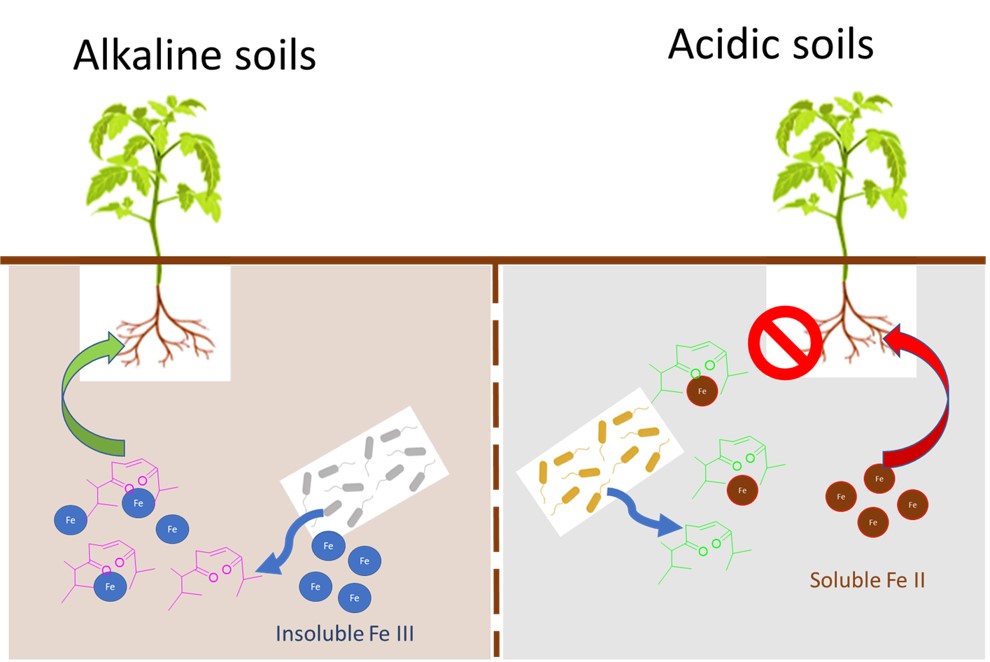Iron is an indispensable micronutrient for plants since it functions as a redox catalyst in many important cellular processes. Despite its abundance on the earth’s crust, iron bioavailability is generally low because of its physicochemical speciation. In neutral and basic environments, iron predominantly exists in the insoluble oxidized ferric state. This limits its availability to plants leading to chlorosis and stunting, which impacts the quality and quantity of produce. In acidic soils, the high solubility of iron can also be detrimental to plant growth due to the induction of oxidative stress and potential over-stimulation of pathogen growth. However, at the right concentrations, iron can support plant growth and stimulate the immune system. Iron availability to the plant and interactions with bacterial siderophores (small molecular weight compounds with a high affinity for iron produced by microbes to aid in iron acquisition) are intimately linked to plant immunity. This study aims to explore the use of bacterial siderophores in improving iron nutrition in alkaline and acidic soils and understand the effect of structurally diverse bacterial siderophores on plant immunity to fungal and bacterial pathogens.

